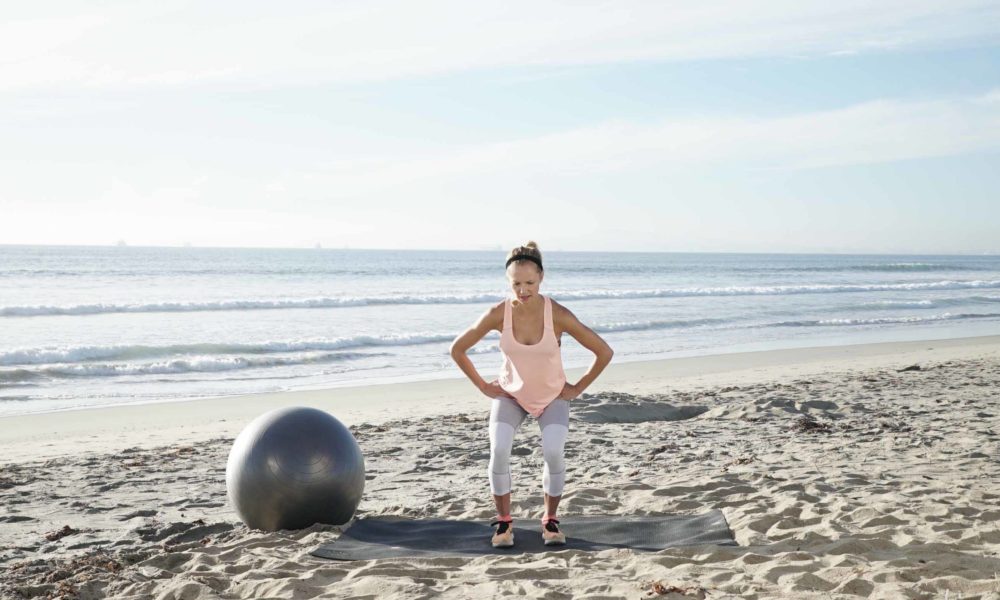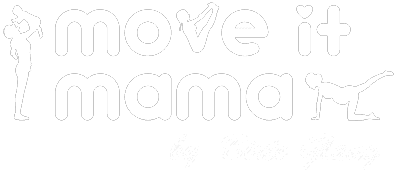Anyone who follows our MOVE IT MAMA blog knows that our goal is to help pregnant women and young moms overcome their uncertainty. We want to educate them about what and how much exercise is appropriate for them during pregnancy. In today’s post, we’re explicitly addressing pelvic floor training – probably the most important workout for new mommies! We’ll explain why you shouldn’t miss out on this training under any circumstances and why you should definitely start doing it even during pregnancy.

Prevention of back pain and incontinence
The pelvic floor plays a particularly important role during pregnancy and birth. A stable and well-trained pelvic floor supports the weight of your growing baby and makes carrying easier. So you’ll have less back pain and better posture! Above all, a well-functioning pelvic floor musculature also serves as the perfect corset for your internal organs, for example the uterus. Many women struggle with incontinence (bladder weakness) during pregnancy and after giving birth. With a trained pelvic floor you effectively prevent or reduce incontinence.
It also makes for a flatter belly and supports the regression of rectus diastasis (abdominal gap between the straight abdominal muscles). Combined with the right mommy core workout, you’ll manage to close the gap again in record time!
My tip: An intact pelvic floor is inextricably linked to good posture and body image! Once you know how to incorporate a pelvic floor workout into your normal exercise routine, you won’t want to miss it even years after giving birth.
Optimal preparation for birth with pelvic floor training
The pelvic floor should not only be stable, but also elastic and flexible at the same time, because your baby takes up more and more space as your pregnancy progresses. Only an elastic pelvic floor can give way sufficiently to this.
Therefore, stretching and breathing exercises are very important for training the pelvic floor. Elasticity, i.e. a conscious relaxation of the pelvic floor, is necessary to open the pelvis for birth.
With pelvic floor training you learn to get a feeling for your pelvic floor and strengthen your overall body awareness. Good pelvic floor training means that you can consciously tighten and relax your pelvic floor during pregnancy. Because during pushing contractions, that’s exactly what will benefit you. The effectiveness of pelvic floor training during pregnancy is also proven by the Australian study, the results of which clearly show that after pelvic floor training during pregnancy, women have a shorter birth period and had less frequent severe birth injuries.
Our MAMA WORKS THE FLOOR series helps you understand the complexity of the pelvic floor through special breathing techniques and use them specifically during pregnancy, birth and the time after.
My tip: Even if you think you won’t actively think about the pelvic floor during birth, your body will subconsciously do the right thing because you consciously taught it how to do it beforehand.
No feeling after birth
If you have a vaginal birth, you will tend not to have real pelvic floor control for the first few days and weeks, but don’t worry, it will come back!
Again, gentle breathing and gymnastic exercises will help stimulate the pelvic floor. The better you have developed an understanding of it beforehand, the easier it will be for you now.
My tip: Start as soon as possible after the birth. That’s why it was important to me to also develop a gymnastics unit for the postpartum phase: Mamas Special 15, because with the right, careful gymnastics you can already gently regain a feeling for the pelvic floor.
Check out the preview of the workout series here:
Positive effect on intimate life
The very special plus is probably that a supple pelvic floor actually has positive effects on pleasure and your intimate life. Hard to believe, but true. Studies have proven that your pleasure increases through targeted pelvic floor training. By tensing and relaxing the love muscle, you experience an orgasm in a completely different way. That’s why, as always with training, “use it or lose it”! And then you are on the best way for stability, lightness and a whole new body feeling as Benita Cantieni, the founder of a special pelvic floor training says.
My tip: I myself think a lot of isolated exercises of the individual pelvic floor layers to be able to target them separately. I always recommend a mix of breathing exercises, strengthening and relaxation, and flexibility exercises.
I could go on and on, but hopefully I have made the core and the importance of pelvic floor training clear to you. So please don’t wait until your postpartum class starts or you have an annoying bladder weakness, but plan your pelvic floor training together with the other training units in your weekly training schedule.
Keep it Moving,
Yours, Birte.
You want to try our MAMA WORKS THE FLOOR series? Then click on the button now and download the MOVE IT MAMA app!
Try move it mama 7 days for free
We give you a trial week in which you can test MOVE IT MAMA free of charge and without obligation.


